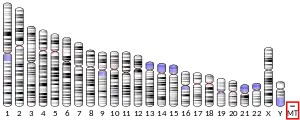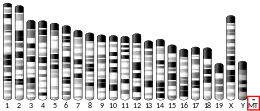| ND5 | |||||||||||||||||||||||||||||||||||||||||||||||||||
|---|---|---|---|---|---|---|---|---|---|---|---|---|---|---|---|---|---|---|---|---|---|---|---|---|---|---|---|---|---|---|---|---|---|---|---|---|---|---|---|---|---|---|---|---|---|---|---|---|---|---|---|
| Identifiers | |||||||||||||||||||||||||||||||||||||||||||||||||||
| Aliases | ND5, mitochondrially encoded NADH dehydrogenase 5, MTNADH dehydrogenase, subunit 5 (complex I), NADH dehydrogenase subunit 5 | ||||||||||||||||||||||||||||||||||||||||||||||||||
| External IDs | OMIM: 516005 MGI: 102496 HomoloGene: 36212 GeneCards: ND5 | ||||||||||||||||||||||||||||||||||||||||||||||||||
| |||||||||||||||||||||||||||||||||||||||||||||||||||
| |||||||||||||||||||||||||||||||||||||||||||||||||||
| |||||||||||||||||||||||||||||||||||||||||||||||||||
| |||||||||||||||||||||||||||||||||||||||||||||||||||
| |||||||||||||||||||||||||||||||||||||||||||||||||||
| Wikidata | |||||||||||||||||||||||||||||||||||||||||||||||||||
| |||||||||||||||||||||||||||||||||||||||||||||||||||

MT-ND5 is a gene of the mitochondrial genome coding for the NADH-ubiquinone oxidoreductase chain 5 protein (ND5).[5] The ND5 protein is a subunit of NADH dehydrogenase (ubiquinone), which is located in the mitochondrial inner membrane and is the largest of the five complexes of the electron transport chain.[6] Variations in human MT-ND5 are associated with mitochondrial encephalomyopathy, lactic acidosis, and stroke-like episodes (MELAS) as well as some symptoms of Leigh's syndrome and Leber's hereditary optic neuropathy (LHON).[7][8]
Structure
MT-ND5 is located in mitochondrial DNA from base pair 12,337 to 14,148.[5] The MT-ND5 gene produces a 67 kDa protein composed of 603 amino acids.[9][10] MT-ND5 is one of seven mitochondrial genes encoding subunits of the enzyme NADH dehydrogenase (ubiquinone), together with MT-ND1, MT-ND2, MT-ND3, MT-ND4, MT-ND4L, and MT-ND6. Also known as Complex I, this enzyme is the largest of the respiratory complexes. The structure is L-shaped with a long, hydrophobic transmembrane domain and a hydrophilic domain for the peripheral arm that includes all the known redox centres and the NADH binding site. MT-ND5 and the rest of the mitochondrially encoded subunits are the most hydrophobic of the subunits of Complex I and form the core of the transmembrane region.[6]
Function
The MT-ND5 product is a subunit of the respiratory chain Complex I that is supposed to belong to the minimal assembly of core proteins required to catalyze NADH dehydrogenation and electron transfer to ubiquinone (coenzyme Q10).[11] Initially, NADH binds to Complex I and transfers two electrons to the isoalloxazine ring of the flavin mononucleotide (FMN) prosthetic arm to form FMNH2. The electrons are transferred through a series of iron-sulfur (Fe-S) clusters in the prosthetic arm and finally to coenzyme Q10 (CoQ), which is reduced to ubiquinol (CoQH2). The flow of electrons changes the redox state of the protein, resulting in a conformational change and pK shift of the ionizable side chain, which pumps four hydrogen ions out of the mitochondrial matrix.[6]
Clinical Significance
A small percentage of mitochondrial encephalomyopathy, lactic acidosis, and stroke-like episodes (MELAS) are caused by a G>A mutation at base pair 13513 in the MT-ND5 gene. Mutations in the MT-ND5 gene cause impaired Complex I function of the mitochondrial electron transport system, impairing those tissues that require significant energy input, such as the brain and muscles. Cardiac and renal involvement as well as symptoms such as myopathy and lactic acidosis can also be observed.[12] Those with MT-ND5 mutations can display the major features of MELAS and MERRF in some patients, as well as symptoms of Leigh's syndrome and/or Leber's hereditary optic neuropathy (LHON) in others.[7][8][13][14]
Interactions
MT-ND5 interacts with Glutamine synthetase (GLUL), LIG4 and YME1L1.[5]
References
- 1 2 3 GRCh38: Ensembl release 89: ENSG00000198786 - Ensembl, May 2017
- 1 2 3 GRCm38: Ensembl release 89: ENSMUSG00000064367 - Ensembl, May 2017
- ↑ "Human PubMed Reference:". National Center for Biotechnology Information, U.S. National Library of Medicine.
- ↑ "Mouse PubMed Reference:". National Center for Biotechnology Information, U.S. National Library of Medicine.
- 1 2 3 "Entrez Gene: MT-ND5 NADH dehydrogenase subunit 5".
- 1 2 3 Voet D, Voet JG, Pratt CW (2013). "18". Fundamentals of biochemistry : life at the molecular level (4th ed.). Hoboken, NJ: Wiley. pp. 581–620. ISBN 978-0-470-54784-7.
- 1 2 El-Hattab, A. W.; Almannai, M.; Scaglia, F.; Adam, M. P.; Ardinger, H. H.; Pagon, R. A.; Wallace, S. E.; Bean LJH; Stephens, K.; Amemiya, A. (1993). "MELAS". GeneReviews. PMID 20301411.
- 1 2 "MT-ND5". Genetics Home Reference. US National Library of Medicine. Retrieved 23 March 2015.
- ↑ Zong NC, Li H, Li H, Lam MP, Jimenez RC, Kim CS, Deng N, Kim AK, Choi JH, Zelaya I, Liem D, Meyer D, Odeberg J, Fang C, Lu HJ, Xu T, Weiss J, Duan H, Uhlen M, Yates JR, Apweiler R, Ge J, Hermjakob H, Ping P (October 2013). "Integration of cardiac proteome biology and medicine by a specialized knowledgebase". Circulation Research. 113 (9): 1043–53. doi:10.1161/CIRCRESAHA.113.301151. PMC 4076475. PMID 23965338.
- ↑ "NADH-ubiquinone oxidoreductase chain 5". Cardiac Organellar Protein Atlas Knowledgebase (COPaKB).
- ↑ "MT-ND5 - NADH-ubiquinone oxidoreductase chain 5 - Homo sapiens (Human)". UniProt.org: a hub for protein information. The UniProt Consortium.
- ↑ Alston CL, Morak M, Reid C, Hargreaves IP, Pope SA, Land JM, Heales SJ, Horvath R, Mundy H, Taylor RW (February 2010). "A novel mitochondrial MTND5 frameshift mutation causing isolated complex I deficiency, renal failure and myopathy". Neuromuscular Disorders. 20 (2): 131–5. doi:10.1016/j.nmd.2009.10.010. PMID 20018511. S2CID 13122341.
- ↑ Taylor RW, Morris AA, Hutchinson M, Turnbull DM (February 2002). "Leigh disease associated with a novel mitochondrial DNA ND5 mutation". European Journal of Human Genetics. 10 (2): 141–4. doi:10.1038/sj.ejhg.5200773. PMID 11938446.
- ↑ Naini AB, Lu J, Kaufmann P, Bernstein RA, Mancuso M, Bonilla E, Hirano M, DiMauro S (March 2005). "Novel mitochondrial DNA ND5 mutation in a patient with clinical features of MELAS and MERRF". Archives of Neurology. 62 (3): 473–6. doi:10.1001/archneur.62.3.473. PMID 15767514.
External links
- Mass spectrometry characterization of MT-ND5 at COPaKB
- GeneReviews/NCBI/NIH/UW entry on Mitochondrial DNA-Associated Leigh Syndrome and NARP
This article incorporates text from the United States National Library of Medicine, which is in the public domain.

